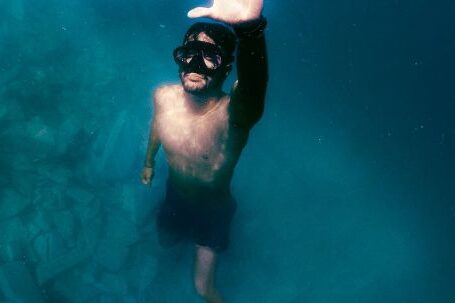Underwater communication devices play a crucial role in facilitating communication between divers and surface support teams. These devices allow divers to stay connected and relay important information, ensuring their safety and enhancing their overall diving experience. To make the most out of these devices, here are some tips to efficiently use underwater communication devices.
Choose the Right Device
Before heading underwater, it is essential to choose the right underwater communication device. There are various options available in the market, ranging from simple handheld radios to advanced full-face mask communication systems. Consider your specific needs and preferences, such as range, battery life, and ease of use, before making a decision.
Ensure Proper Maintenance
Proper maintenance of underwater communication devices is crucial to ensure their optimal performance. Before each dive, thoroughly inspect the device for any signs of damage or wear. Check the battery levels and ensure they are fully charged. Clean the device according to the manufacturer’s instructions to remove any dirt or debris that may affect its functionality.
Test the Device Before Diving
Before entering the water, it is essential to test the underwater communication device to ensure it is functioning correctly. Verify that you can hear and transmit messages clearly. Test the range of the device to ensure it meets your diving requirements. This pre-dive testing will help identify any issues and allow you to address them before they become a problem underwater.
Establish Clear Communication Protocols
Establishing clear communication protocols is vital for effective communication underwater. Before the dive, discuss and agree upon signals and phrases that will be used to convey different messages. Ensure everyone in the dive group is familiar with these signals and understands their meanings. This will help minimize miscommunication and confusion during the dive.
Maintain Proper Buoyancy Control
Maintaining proper buoyancy control is essential when using underwater communication devices. Buoyancy fluctuations or uncontrolled ascents and descents can cause the device to move away from the mouth, leading to muffled or distorted audio. Practice maintaining neutral buoyancy and proper body positioning to ensure the device remains in the optimal position for clear communication.
Use Clear and Concise Messages
Underwater communication devices have limited audio quality and range. To ensure your messages are understood clearly, use clear and concise messages. Avoid using complex or lengthy sentences that may be difficult to understand. Keep your messages short and to the point, focusing on conveying essential information.
Listen and Wait for Confirmation
When using underwater communication devices, it is crucial to listen and wait for confirmation before proceeding. After transmitting a message, wait for the response or acknowledgment from the receiver before moving on. This ensures that the message has been received and understood, preventing any misunderstandings or misinterpretations.
Practice Regularly
Like any skill, using underwater communication devices effectively requires practice. Take the time to practice using the device in controlled environments, such as in a pool or during non-challenging dives. This will help familiarize yourself with the device’s operation and build confidence in using it during more complex dives.
Conclusion: Enhance Your Underwater Communication
Efficiently using underwater communication devices can significantly enhance your diving experience and safety. By choosing the right device, maintaining it properly, establishing clear communication protocols, and practicing regularly, you can ensure effective communication underwater. Remember to listen and wait for confirmation, use clear and concise messages, and maintain proper buoyancy control. By following these tips, you can make the most out of your underwater communication devices and enjoy a seamless diving experience.





